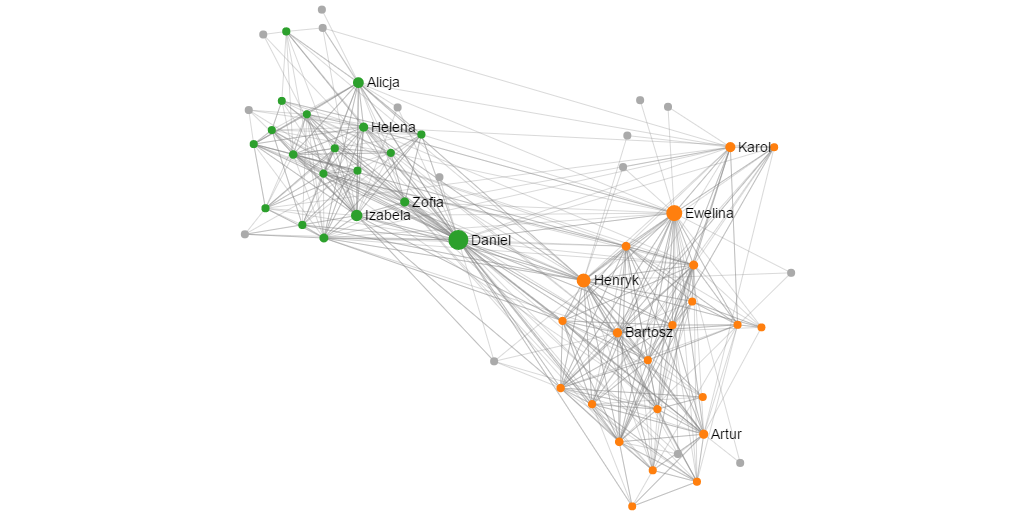Satisfied people generate profits
“We work hard to make sure that everyone at Facebook has access to as much information as possible about every part of the company so they can make the best decisions and have the greatest impact”, says Mark Zuckerberg. These words would certainly be endorsed by another business visionary, the founder of one of the world’s most profitable companies – Tony Hsieh. His creation, the web-based footwear and apparel retailer Zappos, is an example of achieving organizational success thanks to, among other things, an unconventional approach to personnel management. His strategy, in a nutshell, has been: “the more original, creative and satisfied with your life you are, the more we’ll value you”. Acquired by Amazon a few years ago, Zappos is considered by management theoreticians to be a poster child for a new trend in business philosophy. Its major tenet is that workers are an innovative company’s most valuable asset. Satisfied and genuine workers, to be exact.
What counts in business?
The seemingly trite answer – what counts is people – is acquiring today a whole new meaning. What have Zuckerberg and Hsieh discovered and what do like-minded innovators emphasize? First and foremost, they have rejected a corporate business model that relies on a fixed hierarchy of roles, responsibilities and authority. In lieu of it, they have striven to empower every worker to discover in themselves the potential to be a project manager, leader, and even division head. Dispensing with rigid roles has fostered the free circulation of knowledge and helped spawn ideas with actual potential to benefit the business. Today’s HR managers should endeavor to reward thinking outside the box and be aware of the specific relations that exist among employees.
Sadly, life is not so beautiful
There is no denying that people are, or at least should be, the most valued asset in an innovative organization. Sadly, this is not always the case – corporate policies frequently focus on cutting costs (for a variety of reasons that do not fall within the scope of this article), whereas an organization’s objectives are based entirely on P&L and hard KPIs. In my own professional experience, I have unfortunately seen many companies whose only strategy is cutting costs. Although their approach will undeniably help them meet their short-term goals, it is doubtful whether such a brand of management is indeed strategically well-advised, far-sighted and likely to create value. What it lacks is a focus on people, on their growth, and on ways to harness their potential. Viewing workers through a spreadsheet is a dead end. After all, a company cannot cut costs indefinitely. Sooner or later, the only way to sustain growth is to adopt policies that truly increase value by focusing on innovation, creativity and new ideas. All of these can be expected of people who are driven and prepared to take on challenges, and who use their brains to compete. Few people today remember that Zappos and Amazon started out as very cost-conscious organizations (their employees’ statements from a few years ago make an interesting read). At the time, the bottom line was all-important. One was expected to prove that adopting such a business model was the right choice. While there is nothing wrong with cost efficiency, focusing on costs should not stand in the way of building lasting value.
Two orders in one organization
The founders of Facebook and Zappos broke from established ways presumably in order to feel good about how they ran their businesses. But in doing so, they stumbled upon a number of rules which today are being studied by the heads of traditionally-managed organizations. They found that many of the tasks performed in organizations are carried out outside of formal structures. There is a formal order (established by the company’s management) and a hidden (actual) one that operates in parallel and can be summarized as “the way things really work”. This hidden organization is about people networks and the way leaders work, information flows and problems are solved. Because these informal relationships are responsible for much of an organization’s success, it is only sensible to identify this “hidden interpersonal order” and use it to revamp the company.
Applications make maps
One can hardly expect HR heads to spend their entire day analyzing communications to determine which links are genuine and which ones aren’t. The good news is that there is technology that will do the job for them. Today’s managers have available to them applications designed to identify the informal processes that largely determine the way a company runs. Specialized software helps map organizations and reveal how they really work. Such applications visualize a company’s networks, revealing employee relationships and competencies. They generate maps that enable managers to “navigate” companies, observe communication flows and discover communications blocks. A decade ago, the notion that success in business is contingent on employee satisfaction and self-fulfillment would likely have prompted managers to smile ironically. With the rise of the likes of Google, Facebook, Zappos and Adobe, such irony must now give way to thorough analysis.
A handful of organization mapping and network management tools are already available. These include the Australian Polinode, Danish Socializer and Polish Mapaorganizacji.pl which I have had an opportunity to test. The software offers a range of useful functions. Their users get a full picture of their organizations’ networks, which provides not only a snapshot of current relationships among workers, but is also updated continually. Such multilevel links reveal actual competencies and predispositions to assume new roles. For instance, Mapaorganizacji.pl provides a network diagram. Although created by means of sophisticated algorithms, the end result can be read intuitively. Just a glance at the map provides good managers with precious information on relationships across business divisions and groups of employees. They can see which employees are well connected and which are isolated.
The applications put at one’s fingertips complete maps of links, behaviors, communication models, and communication blocks. They are useful tools in the hands of managers seeking to make the best possible use of the potential of their company’s employees. They also help them identify key individuals in the actual, “real” structure (who are vital for communication, action, transferring knowledge), build project teams, organize training, develop talent, hire more efficiently and retain top performers.
The workers, in turn, can use the tool to self-organize. After becoming more aware of the overall corporate context, they will be able to more easily identify who possess the information they need and who is best suited to carry out objective-critical tasks.
Towards network management
The tool helps depict and measure the impacts of real links among workers that involve decision-making, cooperation and knowledge. Using such maps will make managers are much more efficient in eliminating communications bottlenecks; dismantling organization silos; identifying hidden experts, cooperation leaders and communications liaisons among their workers; and managing talent and change more effectively.
The applications can be used by all workers to better understand their organization’s structures and improve how they perform their day-to-day operational duties. Once the application’s algorithms are deployed to sift through the data, they present their findings in the form of an intuitive network diagram. It depicts the actual workflows that supplement a company’s formal organization. This is posted online and usually integrated with the intranet to allow the data member interactions within the organization to be updated in real time.

Collaboration across two teams. The larger nodes denote brokers – individuals who cultivate multiple relationships and broker interactions between the two groups.
The prospects
My organizational management experience, the conversations I’ve had with other CEOs, as well as market trends, client and employee expectations, and the pace of market change all suggest that people, i.e. workers, will long remain vital to every key process, every change and every service provided. They are, of course, supported by tools, data, analyses, artificial intelligence, information exchange platforms, M2M, Big Data, etc. Still, human beings will always remain the agent of and catalyst for change. Understanding people, and their needs, expectations and passions is becoming essential to an organization’s success. Anything that will help us as managers better understand the above will be crucial. Network organizations and the tools that help understand them have a bright future ahead of them.
And one more thing: I hope that everyone will successfully keep cost-cutting efforts and short-term goals from obscuring their vision and strategy for building an organization’s value over the long haul 🙂
I would like to thank Anita Zbieg of Mapaorganizacji.pl for her substantive contributions.
Related articles:
– Fall of the hierarchy. Who really rules in your company?
– Artificial Intelligence as a foundation for key technologies
– A hidden social networks lurks within your company. Find it!
– Top 5 technology events of 2016
– End of the world we know, welcome to the digital reality
– Your clients are already in the future, and where are you?
– Augmented Reality. Seeing more than just a Pokemon
– Stop the deepending of the digital divide










Jack666
Excellent read Norbert
johnbuzz3
Many of the managers question why they should spend time on an activity so indirectly related to the work at hand. The answer is that these contacts provide important referrals, information, and, often, developmental support such as coaching and mentoring. It’s difficult call
Norbert Biedrzycki
Highly dependent on organization and managerial ability to change, efficiency of decision process, leadership
TomCat
Not my area of expertise but this post is very interesting. Hidden forcess in the organization
Norbert Biedrzycki
Thank you
TomK
Heart of network organizational structure is its flexibility and efficiency. Coming up with a network structure requires a selection of the best pest available. At the time, for the role and function. The core objective of this should be to support and implement business strategy. Organizations based on network related structure are way too more efficient in terms of reaching their goals
Norbert Biedrzycki
Right. And this is exactly my observation as well. It’s all about efficiency when client expecations are becoming more and more difficult to meet
Adam Spark Two
There really is no way of getting around it. Sooner or later companies are going to have to embrace millennial leaders. After all, the ones that came before are going to keep retiring. Even before that happens, the old guard going to start losing touch with what an ever-growing group of customers wants, needs and pays attention to.